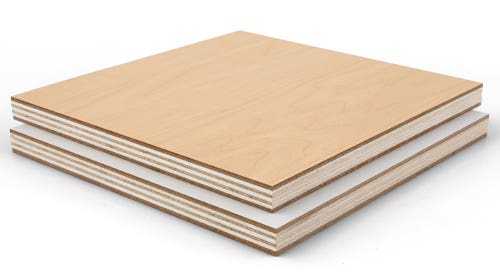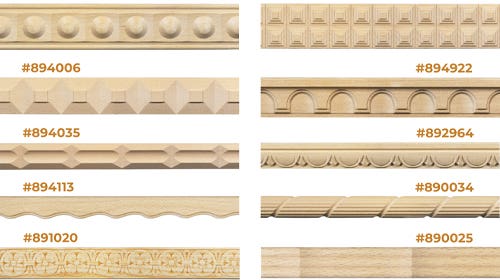Globalization is shaking up the market
Rod Schaeffer runs a small hardwood supply business in South Dakota. Most of what he sells comes from suppliers in the northern Appalachians and, on his last buying trip to…
Rod Schaeffer runs a small hardwood supply business in South Dakota. Most of what he sells comes from suppliers in the northern Appalachians and, on his last buying trip to Pennsylvania, he saw something disturbing. In a warehouse that had pallets of lumber stacked eight and 10 high, buyers from China were walking through the building, pointing at an entire stack and simply nodding. They were buying tens of thousands of board feet at a time and the mill manager was worried that he wouldn’t be able to replace the inventory as quickly as it was leaving. It takes time to harvest, saw and dry hardwoods.
Wood Resources International is a consulting firm in the forestry industry. Established in 1987, the company is based in Bothell, Wash., and specializes in on-site evaluations of forest resources. It also keeps an eye on forest industry developments worldwide.
The company reports that China imported $9 billion worth of lumber in 2013, with North America, Russia and New Zealand being the major suppliers. Those numbers constituted an increase of 19 percent (lumber) and 23 percent (logs) over the previous year. The trend began in 2008 and, while the majority of the lumber is softwood, there are large quantities of hardwoods involved, too.
What does this mean to American and Canadian woodworkers? If the hardwoods suppliers can’t keep pace, it will translate into shortages in some species and also higher wholesale prices. The Chinese buying increase is taking place at a time when the domestic housing market is still recovering from the Great Recession and demand for materials here at home has been very strong.
China’s new appetite for lumber has encouraged other countries such as Sweden and Chile to increase its capacities, too. If the trend continues, demand will support modernization and investment in countries that were, until now, marginal suppliers. That may create long-term competition for U.S. and Canadian mills. For example, Ukraine, which just a few years ago didn’t export any lumber to China, shipped 1.4 million cubic meters in 2013, which was triple the volume from the previous year.
A lot of what goes to China returns here as a competitive import with value added. That is, the Chinese make hardwood flooring, casework and furniture using North American hardwoods and then sell the finished goods back to Americans. Its labor costs are so low that it can ship the material halfway around the world and back and still beat woodshops in the U.S. on pricing. Minimum wage differs from province to province in China, but most are in the neighborhood of 1,400 yuan (about $225) a month. Fortunately, most of the product doesn’t compare well to American-made goods, but the labor cost difference is so vast that attrition plays a role: Chinese manufacturers can deliver such a huge volume of goods at very low prices that they can flood some market segments. A new restaurant in the U.S., for example, can go to a big-box store and buy a chair and four tables made in China for about the cost of having one chair custom-made in an American woodshop.
Vietnam emerges
Vietnam, sharing a similar form of government and strong financial ties with China, is also becoming a major player in the wood world. In the first two months of 2014 alone, Vietnam’s exports of wood and wood products surged 8.4 percent (for an annual growth rate of 50.4 percent), according to the Middle East/North Africa Financial Network (www.menafn.com), which states “the country’s Ministry of Agriculture and Rural Development said that wood exports hit $769 million in the period. Vietnam’s largest wood and timber products importer was the U.S. Around $186.67 million worth of products were exported to the U.S., accounting for 30 percent of total exports.”
What is really interesting is that Vietnam exported $90 million worth of wood and wood products to China in the same eight-week period, which was an increase of just over 60 percent from the same period a year ago. China is now the second-largest importer of Vietnamese wood and timber products, behind the U.S.
In February, delegations from Australia, Brunei, Canada, Chile, Japan, Malaysia, Mexico, New Zealand, Peru, Singapore, Vietnam and the U.S. met for four days in Singapore to discuss the signing of the Trans-Pacific Partnership agreement. This is essentially a Pacific Rim trade organization and most members expect that it will be signed sometime in 2014. According to the Asia News Network, Vietnam currently buys wood from almost 40 countries and exports to the U.S., Japan, New Zealand, Canada and the European Union. If Vietnam buys wood from its partners, it will be eligible to sell its product tariff-free to the rest of the partners.
A really big show
The five-day Malaysian International Furniture Fair took place in early March. Last year, the trade show created an estimated $854 million in sales for furniture builders and that number was expected to improve dramatically this year given China’s dramatic increase in spending. The show takes place in two venues in Kuala Lumpur: the Putra World Trade Centre and the Matrade Exhibition and Convention Centre. Last year’s event attracted more than 6,000 foreign buyers from more than 140 countries. There are more than 500 exhibitors and about 20,000 visitors to the fair, including buyers from Italy, Russia, Belgium and Japan.
Malaysia, along with the U.S., is a potential signatory to the Trans-Pacific Partnership agreement, which could potentially eliminate tariffs on Malaysian furniture imports to the U.S. if it is signed in 2014. However, American woodshops should also keep in mind that this is a two-way agreement that opens up affluent markets in several countries around the Pacific Rim (including Malaysia), many of which are deeply interested in the high quality of goods produced in the U.S. Shows such as the Malaysian International Furniture Fair might open doors to that trade and perhaps to the importing of new species, too.
This article originally appeared in the May 2014 issue.







